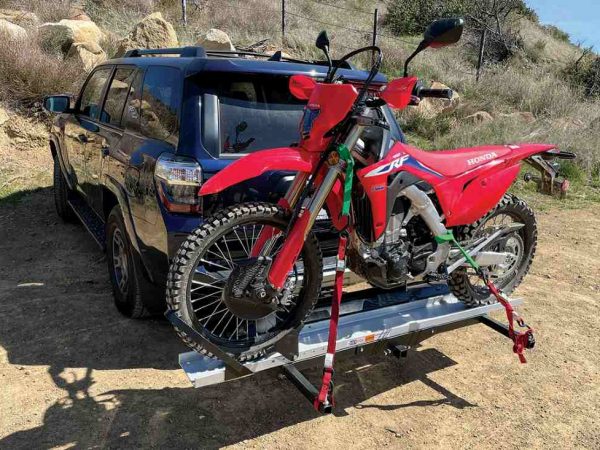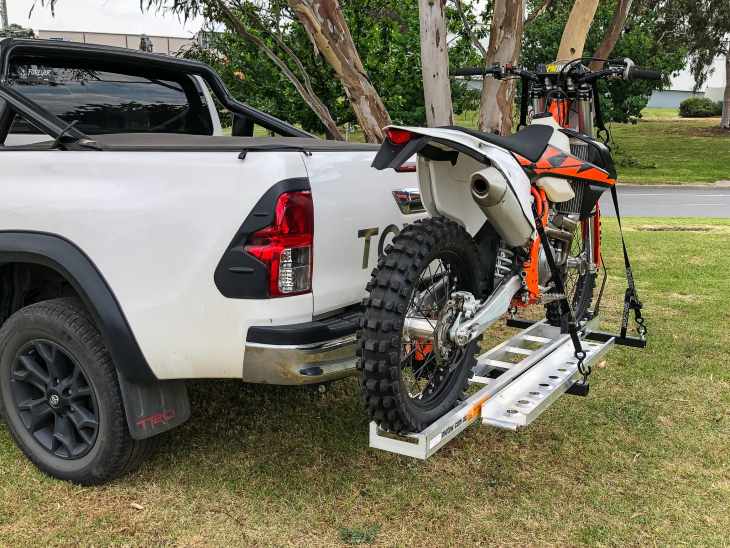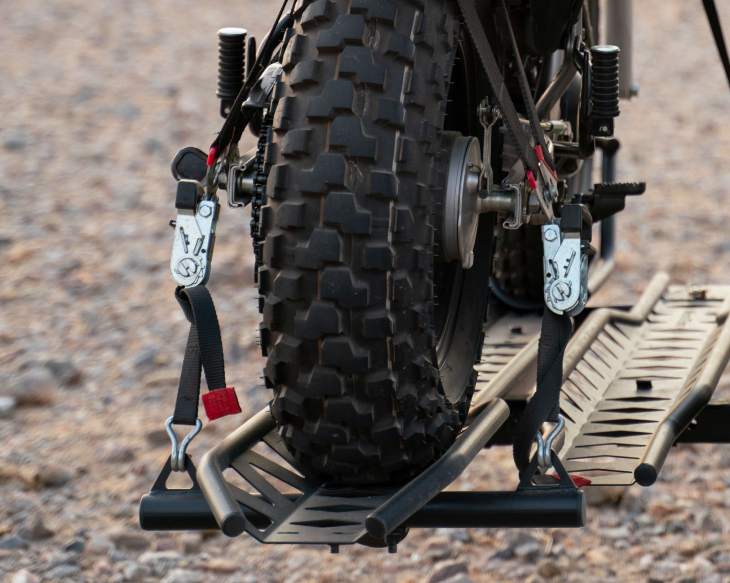14
Apr

Finding out the best way to transport your motorcycle from one place to another without riding it can be quite complicated. Although motorcycles are the smallest form of motorised transportation in the world, they can feel quite large when you try to transport them around. As a motorcycle owner who has had their fair share of problems with them, I’m no stranger to the transportation issues that come with them neither. In my years long experience, I’ve gone through many trials and tribulations and have tried virtually every solution possible. If you want to avoid losing time and the stress associated with transporting your motorcycle from point A to point B, here’s what you can do.
Motorcycle carriers, also known as motorcycle racks are the most convenient and safe way to transport your motorcycle. Motorcycle racks are attached to the hitch of your vehicle, and they act as a ramp that you can put the motorcycle on in a sideways position. These car accessories are simple to use and are some of the most sought-after car additions by motorcycle owners. What makes them better than conventional trailers is the fact that there are far less precautions since your bike will be placed sideways and closer to your vehicle. Of course, you still want to be careful and mindful when driving, but it won’t be as intensive.
Motorcycle carriers are an ideal addition to SUVs, trucks and motor homes, and you should only use them with class III and IV hitches. Avoid using them on smaller vehicles, as they might not be able to handle the necessary weight distribution. The maximum amount of weight motorcycle carriers can handle is about 250-300kg, depending on the model. The average motorcycle weighs around 200kg. If your motorcycle weighs more, consider taking down some heavy items, such as the luggage bags, windshields, side panels, etc.

source: rampitup.com.au
A towing trolley can be ideal for people who don’t have a truck and trailer, and don’t find carriers suitable. While not the most attractive, towing trolleys certainly provide an easy way to transport your motorcycle. These trolleys feature a strong metal construction, and they’re attached to your car’s hitch. The trolley connects to the front tyre of your motorcycle and secures it to the back of your vehicle. The rear tyre of the motorcycle will still be on the road, so your vehicle won’t have to handle the entire weight.
Many people are skeptical about this, as it doesn’t seem like the most secure solution. However, as long as you do everything properly, it’s one of the most secure options. You can also use tow straps to ensure peace of mind. Most people who have used and mastered this method swear by it.
Another great thing about motorcycle towing trolleys is their compact size. They’re small enough to store in the back of your garage. Plus, you can use them with smaller vehicles. However, there are some specifications you should pay attention to. The max load these trolleys can tow is around 400kg, but given the fact that motorcycles generally weigh slightly less, most people should be find.
Trailers are an obvious way to transport motorcycles, but most people stay away from trailers that aren’t meant for transporting motorcycles exclusively. Any trailer that’s big enough to fit a motorcycle will probably do the job well enough, even if it’s meant for transporting other equipment. You can attach the trailer on the back of your vehicle using a hitch. However, keep in mind that hauling a trailer requires some skill and experience, so do some training before you decide to transport your motorcycle on one.
If you’re hesitant about whether your motorcycle will fit your trailer, take some measurements. Once you load the motorcycle, use fasteners and straps to secure it to the trailer. You can also get a tyre holder or chocks to make sure your motorcycle doesn’t roll back and forth.

source: pinterest.com
There are a few tips that I’ve learned during my time dealing with motorcycles that can give you peace of mind knowing everything is going well. For starters, figure out your vehicle’s towing capacity before you decide to install a trolley or trailer. This information is generally found on a sticker inside the passenger door. When doing the math, consider the number of people you’ll need to drive with, plus any other luggage you’ll be carrying.
Then, no matter what method you’re using, it’s always a good idea to stop every 100km or so and see whether your motorcycle is safe and secure. While everything may look fine from your rear or side mirrors, it’s better to be safe than sorry. Furthermore, assume that every driver around you doesn’t know that you’re transporting a motorcycle. More importantly, following traffic rules is now more important than ever, and you should leave extra space between you and other vehicles, and always double check when changing lanes. Go slightly above the speed limit so you avoid shaking your motorcycle.
Lastly, when tying down your motorcycle, avoid compressing the shocks fully when tightening the straps. While compressing the shocks a bit helps, never compress them more than 50%.